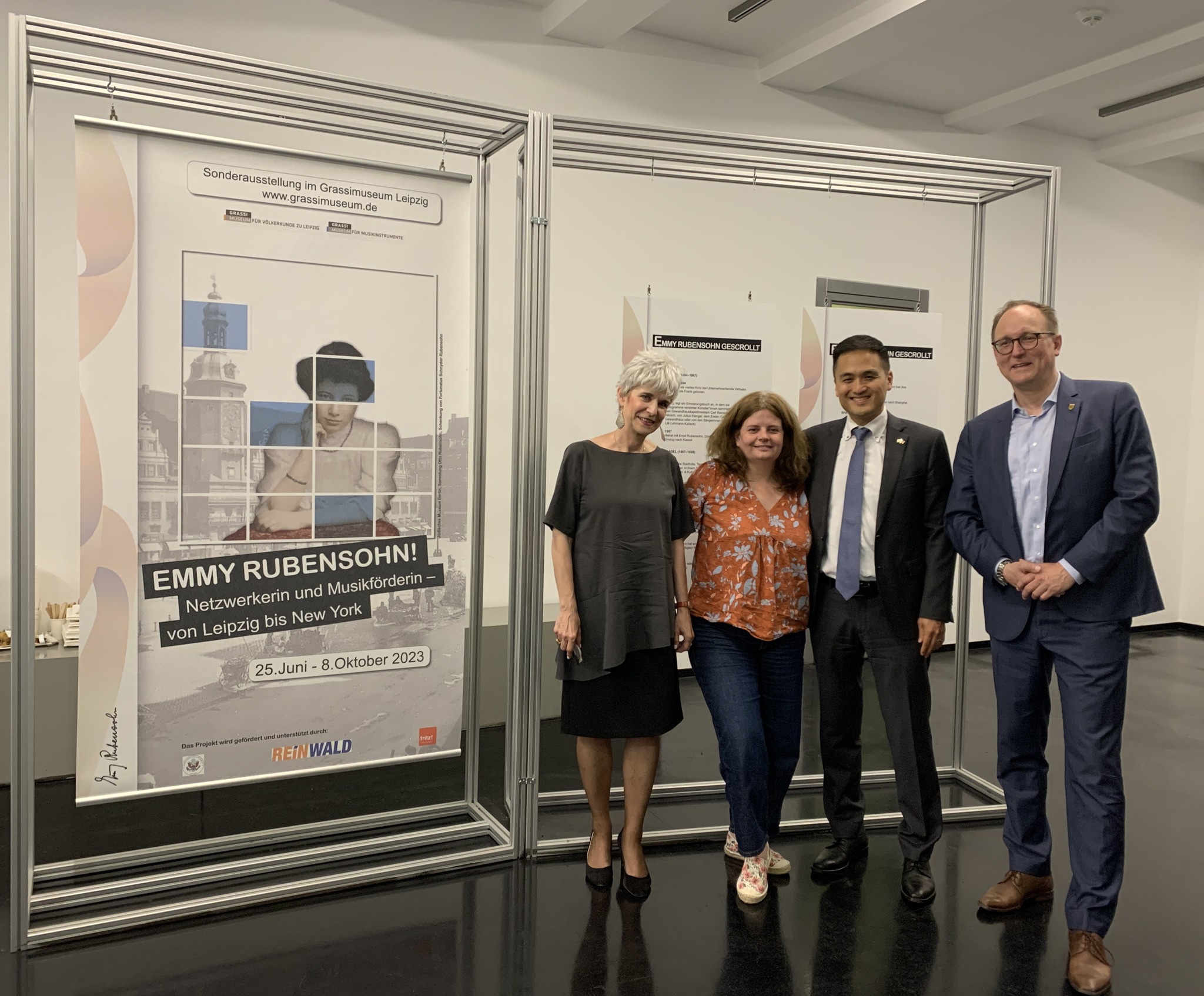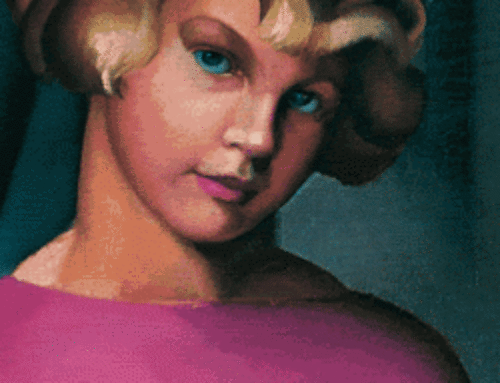There couldn’t be a better reason to send out this newsletter so late: The Emmy Rubensohn exhibition in Leipzig is now open! A big thank you to everyone who made this exhibition possible.
“Emmy Rubensohn, Networker and Music Patron –
from Leipzig to New York”
GRASSI Museum in Leipzig, Germany

From left: Exhibition opening with Rachel Stern (Director Fritz Ascher Society), Léontine Meijer-van Mensch (Director State Ethnographic Collections Saxony, Ken Toko (US Consul General of Middle Germany), and Ulrich Hörning (Mayor of the City of Leipzig)
Emmy Rubensohn (1884-1961) was a networker, music patron, concert manager and author of letters. Born in Leipzig in 1884 as the daughter of the Jewish entrepreneurial family Frank, marriage brought her to Kassel, and persecution by the German Nazis brought her to Berlin, Shanghai and New York. Wherever she lived, she always maintained a global network of artistic friends, which can be reconstructed from the guest book that has been preserved.
Patron of the exhibition is Ken Toko, US Consul General of Middle Germany.
The exhibition is organized by the GRASSI Museum für Völkerkunde, the GRASSI Museum für Musikinstrumente, and the Fritz Ascher Society in New York.
On view until October 8, 2023.

The Rubensohn exhibition is complemented by the exhibition “Hakenkreuz und Notenschlüssel. Die Musikstadt Leipzig im Nationalsozialismus” (Swastika and Clef. The Music City of Leipzig under National Socialism), on view until August 20, 2023 at Stadtgeschichtliches Museum in Leipzig. The exhibition gives a deep insight into the devastating changes caused by Nazi policies, including the expulsion and extermination of Jewish musicians and music publishers.

And now we continue our virtual series “Flight or Fight. stories of artists under repression,” asking: Who was Varian Fry? Is Netflix’ “Transatlantic” one the real one?
WEDNESDAY, JULY 19
12:00 pm ET / 18:00 Uhr CET
”Between America and France:
Varian Fry and the Rescue of Artists”

Varian Fry walking along the street in Marseilles, 1940-1941. United States Holocaust Memorial Museum, courtesy of Annette Fry
With a belated reminder of the proximity of the American and French Independent Day celebrations, this talk by Georgetown University professor Ori Z Soltes focuses on the artists’ Schindler, the American journalist, Varian Fry (1907-1967). Using methods both legal and not, Fry managed to rescue some 2,000 individuals from France between 1940 and 1941.
France had become largely swallowed up by Nazi Germany, the “free” parts in Southern France (Vichy France) were not necessarily unreluctant to assist with the deportation of Jews into Nazi-held territories, and the US immigration policies were far from open-handed to those seeking refuge. Who was he and who were some of those he helped—or in some cases, could not help—to escape destruction?
Not helped by Varian Fry were the Orenstein brothers, who survived Nazi persecution in Houdan, a small village in Northern France. Earlier this year, Philip Orenstein and Dr. Nadine Orenstein spoke about Philip’s murals about France During World War II:

The Orenstein brothers in front of Philip Orenstein, The Big Cheese, 1991 and 2001, Lithograph with adhered decals printed on three sheets. Photo Nadine Orenstein. Metropolitan Museum of Art, New York
Throughout this summer, Philip Orenstein’s lithograph “The Big Cheese” from 1991 and 2001 is on view at the Johnson Gallery of the Metropolitan Museum of Art.
The triptych depicts the Isle de France, the ship on which the artist and his family emigrated to the United States in 1949. The ship is surrounded by images of the artist and his family, the town Houdan, where the Orenstein brothers were hidden during World War II, symbols of wartime Europe and America, as well as quotes from Parisian graffiti.
Philip Orenstein (b. 1938) is a visual artist and professor emeritus of art at Rutgers University in New Brunswick.










